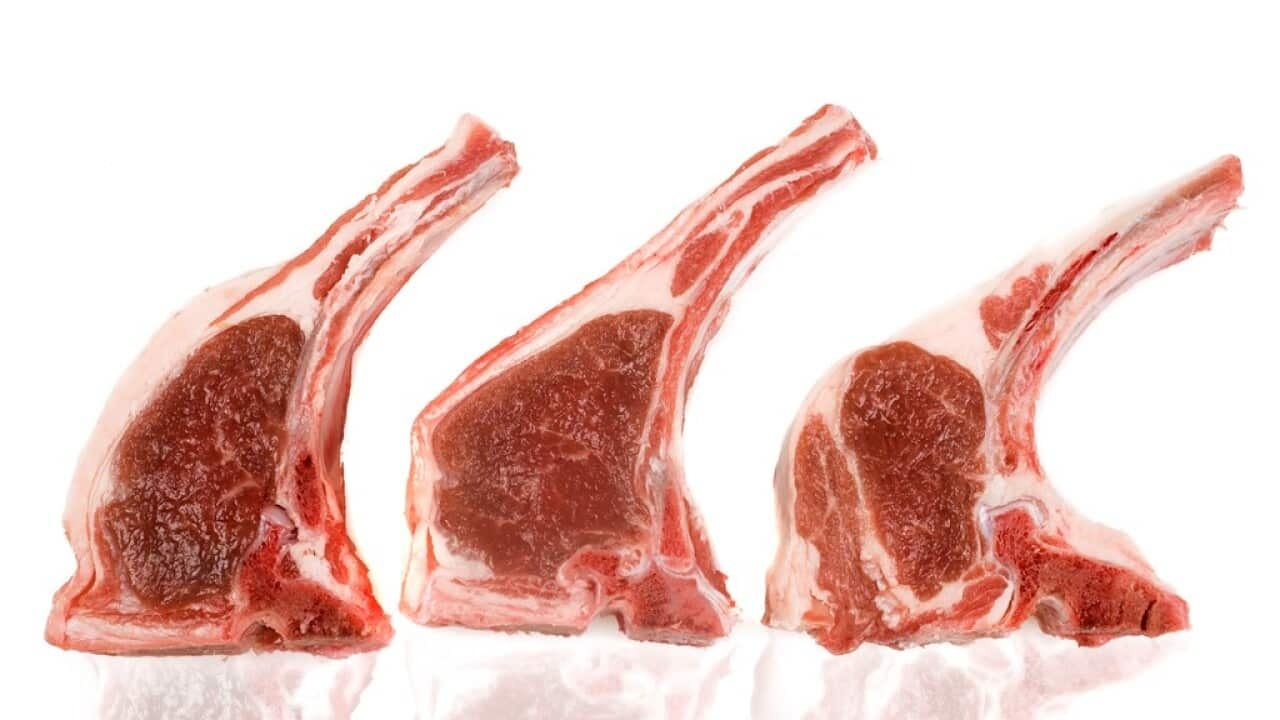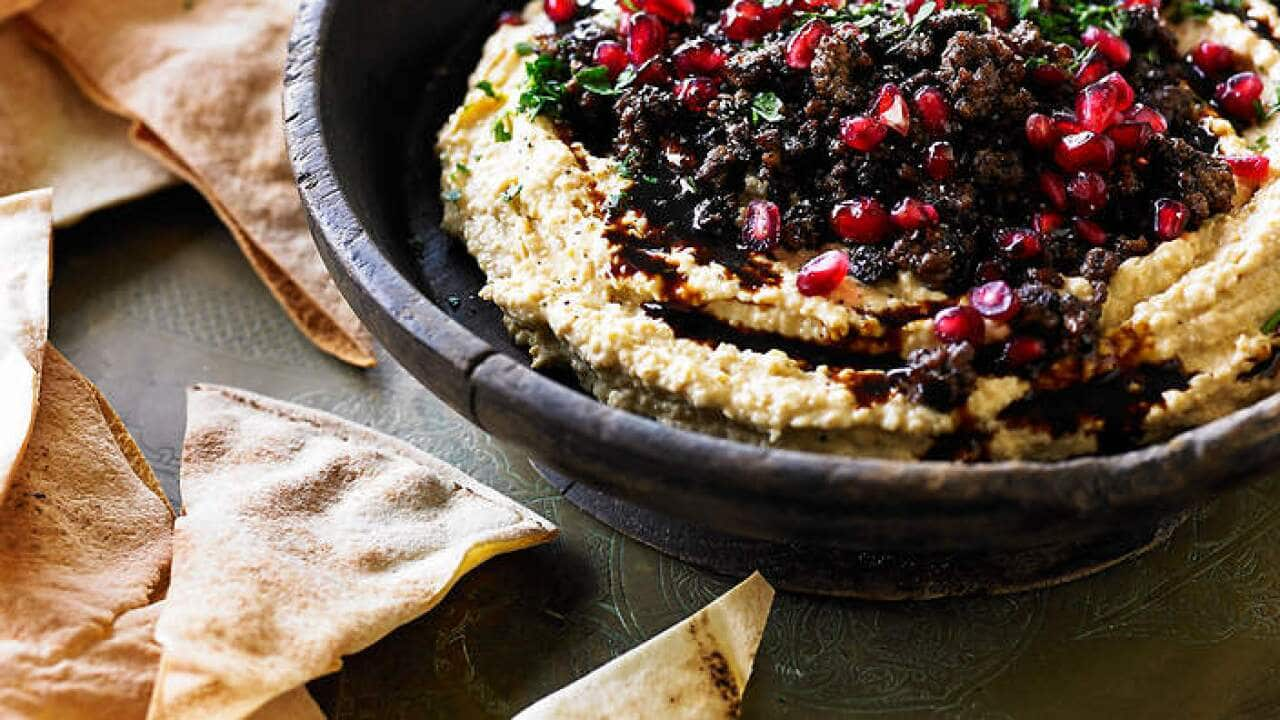Nobody wants to get food poisoning, but the way we store and reheat our leftovers can potentially put us at risk - and you might be surprised at what foods need particular care.
Duane Mellor, Accredited Practising Dietitian and spokesperson for the Dietitians Association of Australia, tells SBS that cooked meats, curries, pies, dairy products, seafood, rice and some salads are among the foods considered, and could leave you with vomiting, diarrhoea and stomach cramps if you aren’t careful.
Here are four in particular where some care - and expert advice - can help you side-step any nasties.
Rice
Rice-based meals are an easy lunchtime staple around the office but if not stored correctly, your leftovers from the night before can become hazardous.
“There’s a certain bacteria called Bacillus cereus which is a spore-formed bacteria that settles in cooked rice and produces toxins,” Mr Mellor explains.
Generally, as soon as food begins to cool below 60 degrees, bacteria that can survive the cooking process can begin multiplying.
“Most bacteria take at least 20 to 30 minutes to double,” Mr Mellor says, so in a two-hour period, one bacteria could have become between 16 and 64 bacteria, and it’s when bacteria multiply to sufficient numbers that we become in danger of getting ill. So if you want to keep your leftovers for the next day, Mr Mellor says “it’s important to bring your food down from 60 degrees (the minimum temperature at which heat starts to kill bacteria) to 21 degrees in a maximum of two hours, then from 21 degrees to five degrees in no more than four hours. Then you keep it refrigerated for the life of the food.”
So if you want to keep your leftovers for the next day, Mr Mellor says “it’s important to bring your food down from 60 degrees (the minimum temperature at which heat starts to kill bacteria) to 21 degrees in a maximum of two hours, then from 21 degrees to five degrees in no more than four hours. Then you keep it refrigerated for the life of the food.”

Spores can grow on rice when left on the bench so it's best to cover it once it's finished cooking and store in the fridge within two hours Source: Free stock photo
When it comes to the bacteria found in rice in particular, “you can’t kill the spores with heat, so you need to stop them getting in and not allow them to grow. Covering rice after it is cooked will stop the bacteria getting in from the air,” he says.
Covering rice and correctly following the cooling process after cooking is essential, but so is the way you reheat it. The longer you take to bring your food back up to 60 degrees, the more of a window you give bacteria to multiply, so Food Standards Australia New Zealand taking no more than two hours to reheat leftover food.
Of course, this isn’t something you have to worry about when using the office microwave - it's more of a consideration for food-service businesses - but Mr Mellor says you should get your food to 70 degrees or higher and hold it at that heat for at least two minutes before eating.
Meat pies
Dangerous food bacteria fall into three groups: “The ones you’ve got to kill with heat [as with chicken]," Mr Mellor explains, "the ones that form spores which can escape being killed by heat and can come out of hibernation if you don’t keep them at the right temperature after cooking [like in rice, for example], and then the ones that form heat-resistant toxins so it doesn’t matter if you’ve killed them, they’ve left their mess behind.”
The danger with reheating meat pies comes from the third group “if they’ve been cooked and not cooled quickly enough”. When this is the case, reheating the pie to a high temperature throughout should kill the bacteria, but it could already have left its toxins behind, and these can be dangerous to us.  As Mr Mellor explains, “hot foods need to be kept above 60 degrees and cold foods below five degrees to keep them out of the risk zones where bacteria can grow.”
As Mr Mellor explains, “hot foods need to be kept above 60 degrees and cold foods below five degrees to keep them out of the risk zones where bacteria can grow.”

Meat pies should never be left to sit at room temperature for long as a toxin releasing bacteria can form Source: Moment RF
“Toxin bombing bacteria can produce toxins between those temperatures so even if you are reheating your food above 60 degrees if it’s been stored outside those windows, their toxins can still remain.”
A common bacteria that can be found in poorly stored meat pies is which can cause vomiting, abdominal cramps and diarrhoea.
So get any leftover hot pies into the fridge quickly, and don't let then sit out at room temperature for longer than two hours before you reheat them.
Chicken
Chicken is a protein that needs to be prepared with particular care and Mr Mellor says “a lot of the problem you get [with chicken] is from food handling”. The type of bacteria found on raw chicken meat can be extremely dangerous to humans but they can easily be killed by cooking it through to at least 60 degrees.
A common mistake made when preparing chicken is washing it, with Mr Mellor explaining that “people like to wash their chicken in the sink and don’t realise that sprays all the bacteria everywhere” - in fact, the only way to destroy the bacteria is with heat. Not practicing good hand hygiene and using the same chopping boards for raw and cooked chicken are other ways chicken prep can go wrong.
However, when it comes to eating chicken the next day “the problem is when people don’t chill it quickly then don’t get the heat all the way through the chicken when reheating it,” Mr Mellor says. He adds that you should only reheat chicken once and eat leftovers within two to three days.

Care needs to be taken when preparing chicken but there is no need to wash the meat before cooking Source: Moment RF
Potatoes
Although potatoes are generally OK to eat the next day, there are two circumstances in which they can become problematic when reheated.
The first is when potatoes aren’t stored in the fridge after cooking, which can give rise to dangerous bacteria Clostridium botulinum. It particularly likes to grow in low-oxygen environments, like the one created when you wrap a potato in foil, cook it, and then leave it in the foil, and can cause a potentially life-threatening illness.
A famous case of this happening was in the US in 1994, when 30 guests at a Greek restaurant fell ill – with four of those requiring mechanical ventilation – after consuming a potato dip. A on the incident states, “toxin formation resulted from holding aluminium foil-wrapped baked potatoes at room temperature, apparently for several days, before they were used in the dips.”
- but if you have leftovers, remove the foil before putting the potatoes in the fridge.
Reheated potatoes can also be troublesome “if there are any contaminants or spore-forming bacteria in the skin,” Mr Mellor says.
“If you peel or scrub your potato very well that’s going to remove the bacteria, but again it’s down to the timings and not keeping foods at a temperature the bacteria can grow.” He adds that when preparing potatoes, attention needs to be paid to eyes and nooks in potato skins where soil and bacteria can be caught and begin to multiply after the cooking process.

A little bit of care can make life safer when eating leftovers. Source: iStockphoto
Tips to avoid poisoning yourself
Lydia Buchtmann, a spokesperson for the Food Safety Information Council, tells SBS that she regularly receives enquiries about whether it’s safe to eat food that’s been left out for hours.
"It’s one of our most common questions, a lot of people ring us up because they’ve left food out on the benchtop overnight - the classic 'pizza’s been there all night, is it still alright to eat?'," she says.
"When food’s been out for more than two hours bacteria can grow in it so the secret is if you have leftovers, as soon as the food stops steaming, divide it into smaller portions and put it straight into the fridge or freezer. It’s a myth that you have to wait until it cools down to room temperature."
Placing food into small containers helps it cool down quicker in the fridge but Ms Buchtmann recommends that even when stored correctly, all leftovers should be consumed within two to three days. People who would be put at particularly high risk from food poisoning, such as pregnant women, or the frail and elderly, should consume leftovers within 24 hours, she adds.
Another tip is that when it comes to reheating food, be sure to stir it occasionally so ensure it is heated all the way through.
Food Standards Australia New Zealand have more about food safety when it comes to reheating leftovers.












